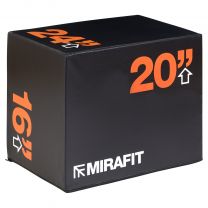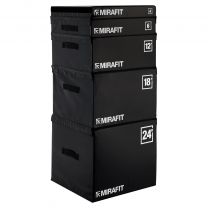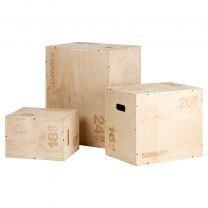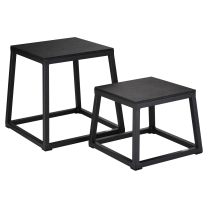The Power of Jumping
The Power of Jumping

Have you ever seen a skinny sprinter? I am guessing that the answer is no. So why is that? Is it because they spend their days just trying to get strong or is it their power training?
What is Muscle Power?
Most people will have a good idea of what strength training involves. The ultimate goal, particularly for maximal strength training is to train the neuromuscular system to be able to lift heavier weights. The time taken from the initiation of contraction until maximal force is reached is relatively long and the time of contraction is not the main focus. Power is the opposite of this. The focus of training on the neuromuscular system is to be able to contract the muscle as fast as possible. Ultimately, you will be moving less weight but at higher speeds.
What Are the Benefits of Power Training?
The benefits of power are largely sports specific. Think along the lines of being able to sprint faster, throw a javelin further, kick a football further and hitting a tennis ball harder. However there are also benefits for strength athletes. Possibly the most attractive benefit is muscle size.
Fast twitch muscle fibres have a larger diameter than their slow twitch counterpart and that is why you are not likely to see a skinny sprinter. Power training is also a fun way to train and can be included in phases between your regular strength training to add variety.
How Do We Train for Power?
As we have mentioned above, power training’s main focus is the speed of contract. There are many methods for training power. These methods range from highly technical Olympic lifts to the more accessible plyometric training methods. Plyometrics give you the most bang for your buck as it requires little specialist equipment but can offer large training rewards. It largely consists of jumping, hopping and skipping movements. One of the most indispensable pieces of equipment for training these explosive movements is the plyo box or jump box.
Plyo Jump Boxes
Plyo jump boxes come in various forms that all offer similar training benefits. Make sure to select a jump box that gives your training the flexibility and durability that you require.
3-in-1 Wooden Plyo Jump Box

These 3-in-1 Wooden Plyo Jump Boxes make an excellent first buy as it is so cost effective. They are made from strong plywood along with internal reinforcements which can handle weights of up to 150kg. The 3-in-1 Plyo Box consists of a single box that can be rotated to different sides, giving the user the option of three different heights to train with. The smallest 3-in-1 box is 18” x 16” x 12” the medium size is 24” x 20” x 16” and finally the largest option is 30” x 24” x 20”.
3-in-1 Soft Plyo Jump Box
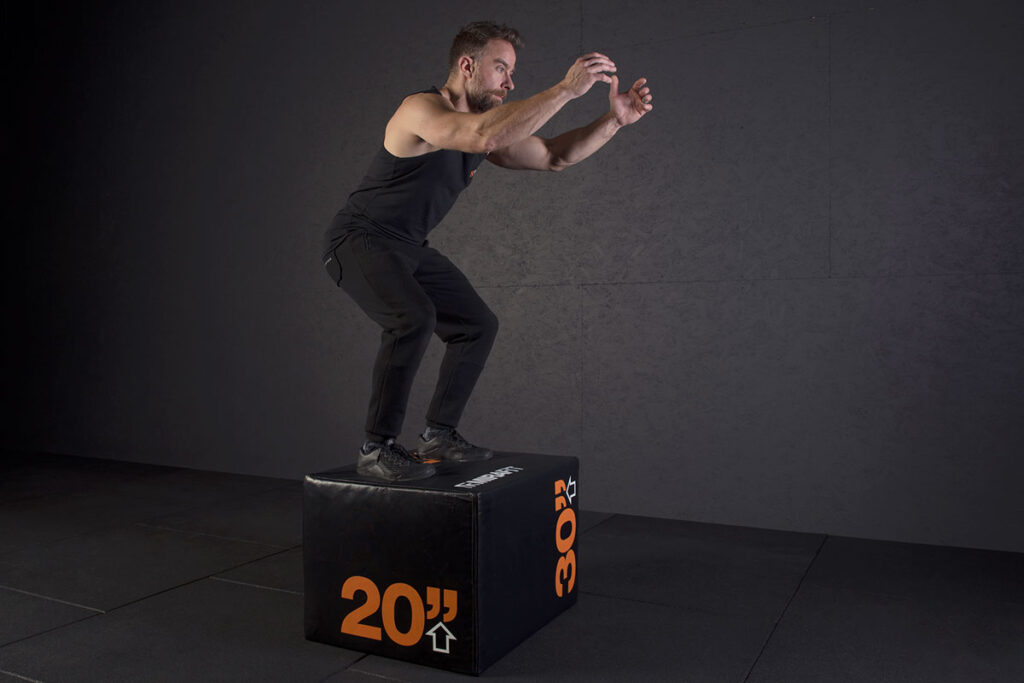
Each side of the 3-in-1 Soft Plyo Jump Box has different sizes similar to the wooden jump boxes. The difference with these boxes is that the soft plyo jump boxes are made from high density foam which helps absorb the impact when landing on the box, thus helping to reduce the forces transmitted through the lower body. The durable covers of these boxes are also non-skid so there is no need to worry about the box sliding away from you when you land. The Soft Plyo Jump Box comes in two size options. The smaller option is 24” x 20” x 16” while the larger size is 30” x 24” x 20”.
Soft Stackable Plyo Box

Customise and progress your jump height. These Soft Stackable Plyo Boxes can be selected in 5 different heights that can be used independently or stacked on top of each other. They have large self-fastening straps to ensure that the box remains stable while stacked. The individual sizes range from 4” up to 24”. The jump boxes are made from high density foam and feature the non-skid surface like the 3-in-1 Soft Plyo Jump Box
Steel Plyo Jump Boxes

These highly durable Steel Plyo Jump Boxes are made from steel and have a rubber top surface to prevent your foot from slipping as well as anti-slip feet to prevent the box from moving. If you are adding additional weights to your power training then this box is capable of withstanding the increased impact. Available in 12”, 18” and 24” sizes, these jump boxes can stack on top of each other making the storage easy.
Plyometric Training
Plyometric training involves the stretch shortening cycle (SSC). This SSC involves the muscles being pre-stretched before contraction, much like stretching an elastic before releasing it. This stretching component is what results in greater power being created and is the basis of plyometric training. However, for this reason, plyometric training is a form of high intensity training and to have the best results and avoid injuries there are a couple of things you should remember.
Exercise Continuum
As with any form of training the body can adapt to great training load if given the time to adapt. In plyometrics this is best done by allowing the body to adapt to the stretch portion of the exercise first by doing small jump and hold exercises before progressing to more advanced training. Also start by using both feet moving vertically before introducing single leg or multiple directional movements.
Reps
Power training utilises a fast metabolic pathway that provides energy for less than 10 seconds. Anything over this and you will start accumulating lactic acid. Therefore, when it comes to power training you should keep the number of reps low but make them explosive. Reps should range from 2 - 6.
Rest
The neurological load of plyometric training is high. While your body might feel recovered after a minute or two your nervous system hasn’t and it is the nervous system that is important to create the quick firing of the muscles. If the nervous system is not firing optimally then you will lose the effect of power training. For low intensity plyometric training you should have about 3 minutes of rest between exercises. High intensity plyometric exercises require up to 8 minutes of rest between exercises.
Donald Chu and David Potach developed an easy way to determine training load when it comes to plyometric training by counting the number of foot contacts per session. If your foot makes contact with the plyo box when you jump onto it or if your foot lands on the ground after a jumping or hopping exercise it will count as a foot contact. This includes single and double legged exercises. A beginner should be doing between 80 - 100 foot contacts, an intermediate athlete should be doing 100 - 120 foot contacts while an advanced athlete should be doing 120 - 140 contacts. Use these foot contacts as a guideline to how many reps and sets you are doing and slowly increase the number of foot contacts to keep progressing.
Plyometric training is a science all on its own and provides a simple yet highly effective way to train for power and speed. Most of the movements involve a form of jumping, hopping or skipping. These exercises are best done with a plyo jump box. They provide you with the option of jumping onto a box, jumping off the box or jumping over the box. Plyometrics can be inserted as a training phase into your training or used to supplement your current training by including some exercises into your regular training. Whether it is sprinting speed that you are looking to improve or just increasing your power and muscle size, plyometric training has its place in your training program.
Written by guest author Brendan McBirnie
For more content, follow us on Instagram, YouTube, TikTok, and on our official Mirafit Facebook page.
Enter your email to signup to our newsletter
Tags: Equipment > Plyo Jump Box ; Exercise Type > Conditioning

